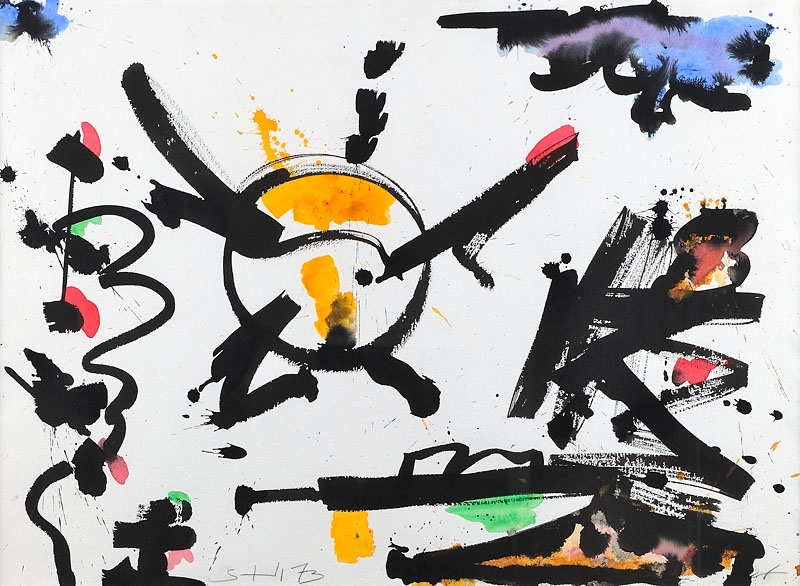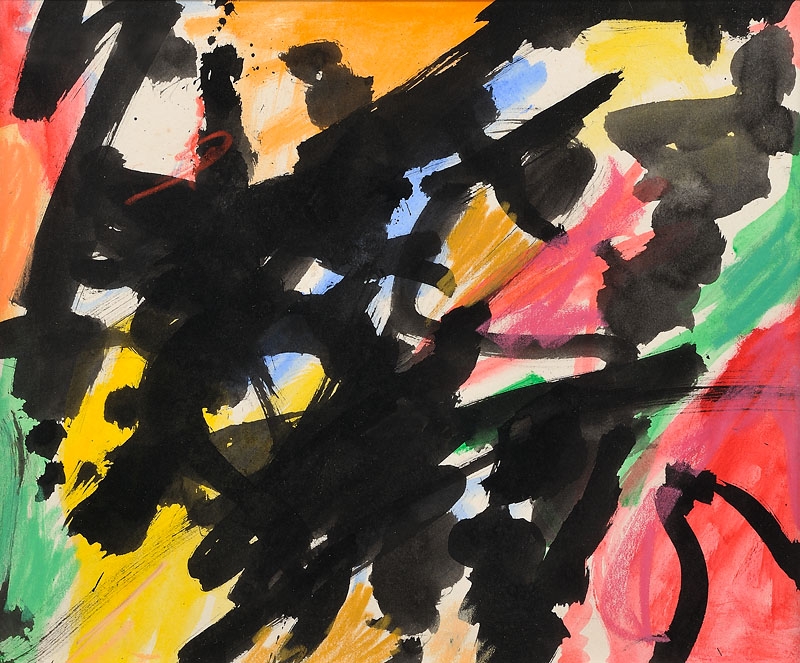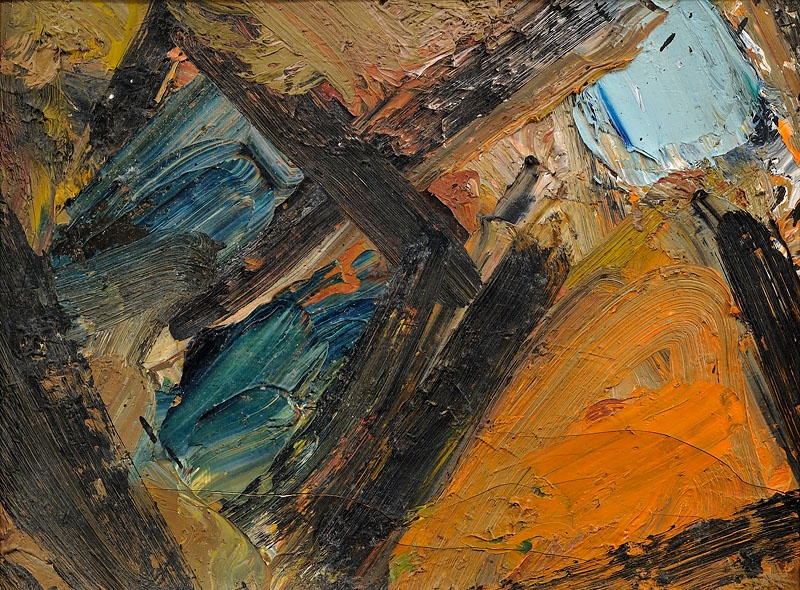Carroll Sockwell (1943-1992)
Born In 1943, Sockwell grew up in segregated Washington, the youngest son in a military family. Despite his family's relative prosperity, Sockwell led a troubled childhood and It was not until his artistic talents were recognized by Elinor Ulman, a noted art therapist and teacher at the Corcoran School of Art that Sockwell gained the confidence to pursue a career as an artist. At the age of seventeen he struck off for New York City where he immersed himself in the art scene of the time,meeting artists of the abstract expressionist movement and others beginning the expansion in Pop Art, Minimalism and conceptualism.
Upon his return to Washington in 1963. Sockwell found a city that itself had become an important art center. More than a place that housed great collections of art, it was a place that fostered a growing community of working artists from which the highly influential art critic Clement Greenberg had developed the Washington Color School. The Phillips Collection became a lodestone for Sockwell as he developed a deep appreciation for the Modernist works assembled there, especially Klee. Dove, and Braque. In a recent letter, Willem de Looper, former curator at the Phillips, commented that Sockwell, "knew the collection as well as I did -and I worked there."
Sockwell then worked as a curator at the Barnett-Aden Gallery, the nation's first museum of African-American art, which was established in 1943 by James Herring and Alonzo Aden. He later exhibited at the Jefferson Place Gallery, then under the direction of Nesta Dorrance.
Jefferson Place, founded in the late 1950s by Alice Denney (who later founded Washington Project for the Arts), was a nexus for Washington artists as well as avant-garde artists from outside the city. By the early seventies, Sockwell's art was recognized by several museum curators, notably Walter Hopps, Roy Slade, and Jim Harithas, culminating in a solo exhibition at the Corcoran Gallery of Art in 1974 and group exhibitions at the Brooklyn Museum and the Whitney Museum of American Art in New York. These successes were followed by exhibitions at several Washington galleries. including Middendorf Gallery, Barbara Fiedler Gallery, and, in 1983. at Harry Lunn Gallery.
Sockwell belongs to a somewhat later generation of Washington artists than that embodied by the Color School, with whom he maintained ties. While artists in his generation are more pluralistic, Sockwell's influence extends to a younger generation of Washington artists who hold direct mark making and abstraction in high regard.
To the extent that Sockwell can be placed in the Modernist tradition, it is important to recognize that his vision is not so much a product of Modernism, but comes from a more seminal place within his own psyche. His enjoyment and appetite for Modem art and by extension for jazz, were sources of personal confirmation and empowerment as he sought to realize his own creations within the overall context of Modernism. His art brought considerable sophistication to several classically modernist questions.
One reoccurring issue in his work is the integration of geometric and gestural abstraction. The painted constructions in particular reflect a sense of completion and a successful fusion of these two disparate strains. Their highly crafted imagery demonstrates solidity and confidence which result from a shamanistic mastery of essential elements. Sockwell's greatest strength lies in his ability to hold polar opposites and contradictions in his mind and resolve them visually in his art.
Throughout his work, especially in recent works, personal and troubling motifs appear. Appearing almost as automatic writing, these works take the viewer into violently rent territory at the edge of darkness and oblivion. There is an interesting parallel in this regard between the work, "Crisis of the Sixties from 1960" and his most recent work, "The Wrecking of the Berlin Wall". Both date from historical periods of drastic social change and both, in their respective ways, quantify the historical moment in their abstract imagery.
Like much abstract art, Sockwell's work was eclipsed during much of the 1980's. But changes in the trends of the art world did not stop Sockwell. He continued to develop his intensely personal work despite economic straits.
Two emblematic figures-heroes in Sockwell pantheon, have died: Francis Bacon and Marlene Dietrich. As different as they were, these artists epitomize the difficult struggles and tenuous triumphs over adversity and pain that lie at the heart of Sockwell's art.
This information is from a 1992 essay on Carroll Sockwell by Donald Russell. It was published in a handout by the Washington Project for the Arts for Sockwell's last exhibition in 1992, just before his tragic death. Sockwell committed suicide in 1992
Bio courtesy of www.rogallery.com. Link to full bio: http://rogallery.com/Sockwell_Carroll/sockwell-biography.html

Untitled (Abstract)
Watercolor
21 1/2x29 1/2 inches
1973
Photo credit: John Wilson White Studio

St 1177
Watercolor
12x14 inches
1977
Photo credit: John Wilson White Studio

St. II
Oil on board
12 1/2x15 1/4 inches
1978
Signed and dated
Photo credit: John Wilson White Studio